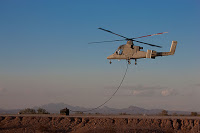A senior source in the Russian Air Force told to Moscow
website Telegrafist that Russia had plans to bomb Qatar and Saudi Arabia.
He claims that the combat mission can be done by a unit of Su-27s, as well as by modern bombers Su-34s with extra fuel tanks, accompanied by the Su-27s.
"Today, the situation is such that even in case if the Su-34s do not have enough fuel to get out of Iran's airspace on return flight, they will be able to land right there", he said - "a combat radius of the Su-27s allows fly to the capital of Qatar and Saudi Arabia and return, the Su-34s do not have such radius".
On the question when and why these plans developed, the Russian Air Force officer replied:
"Saudi Arabia is a key US ally in the region, not Israel, as many suggest, namely the regime of King Abdullah who is willing to get involved where you want to please his masters, so of course the Soviet Union was preparing plans for the destruction of this regime because without it - Saudi Arabia will no longer be an
He claims that the combat mission can be done by a unit of Su-27s, as well as by modern bombers Su-34s with extra fuel tanks, accompanied by the Su-27s.
"Today, the situation is such that even in case if the Su-34s do not have enough fuel to get out of Iran's airspace on return flight, they will be able to land right there", he said - "a combat radius of the Su-27s allows fly to the capital of Qatar and Saudi Arabia and return, the Su-34s do not have such radius".
On the question when and why these plans developed, the Russian Air Force officer replied:
"Saudi Arabia is a key US ally in the region, not Israel, as many suggest, namely the regime of King Abdullah who is willing to get involved where you want to please his masters, so of course the Soviet Union was preparing plans for the destruction of this regime because without it - Saudi Arabia will no longer be an





































.national+combined+aircraft+conceptual+design+turkish+air+force+fifth+5th+generation+fighter+jet+(1).jpg)









.jpg)